A carnivorous plant might seem impossible, but the Venus fly trap (Dionaea Muscipula) exists to challenge that notion. It is a notoriously tricky carnivorous plant to keep and grow. Although named after Venus, the goddess of love and beauty, this mysterious plant isn’t exactly kind or loving. On the other hand, Charles Darwin described the plant as “the most wonderful” because of its incredible ability to snap shut on unsuspecting insects.
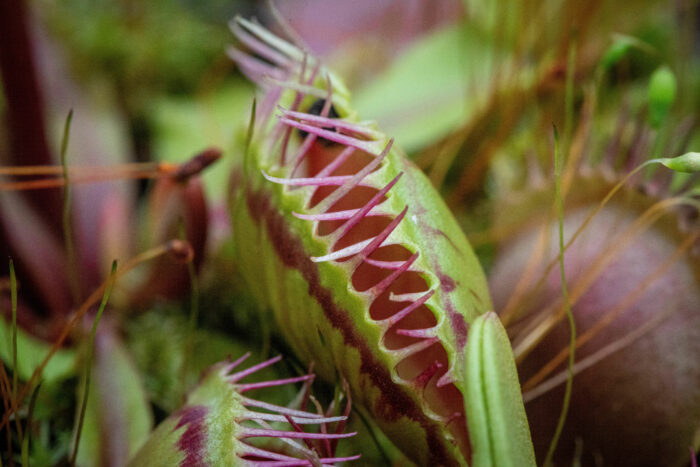
Image credits: Raphael Wild
The Venus fly trap plant has traps that consist of two flat-toothed leaves with trigger hairs. Inside each trap is nectar, which lures insects and other small creatures to their death. When the trigger hairs are stimulated by prey, the trap closes, and enzymes digest them. This fascinating plant might be challenging to care for, but the risk is worth the reward! We interviewed Vladan Nikolic, a Houseplant Expert, to better understand how to care for Venus flytraps. Before we start, here are some Venus fly trap facts to help you know the plant better.
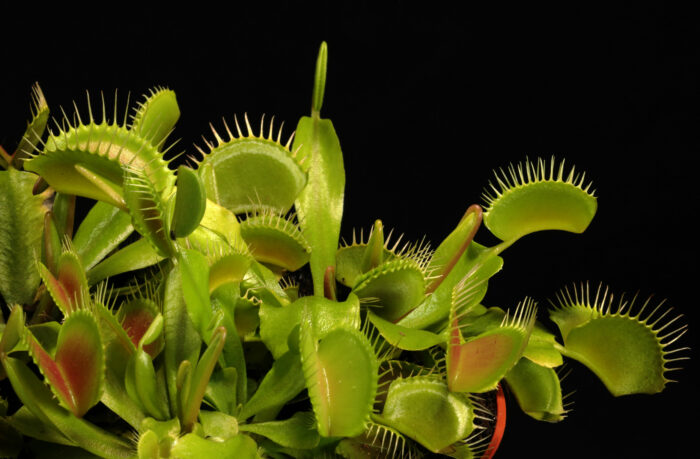
Image credits: Andi Superkern
- Venus Fly Trap Scientific Name: Dionaea Muscipula
- Plant Type: Perennial herbaceous plant
- Light: Partial to full sun
- Soil: Acidic soil with poor nutrient content
- Water: Rainwater or water that is distilled, demineralized water, or obtained through reverse osmosis
- Temperature: 21–30°C (70–86°F)
- Height: 8–12 inches
- Width: 3–5 inches
- Venus Fly Trap Flower: Tiny white flowers that grow in a cluster at the top of leafless stalks
Where Do the Carnivorous Venus Flytraps Originate From?
Let’s get one thing straight: Venus flytraps aren’t from Venus! They originated in the coastal bogs of North and South Carolina. While they have been planted and naturalized in other countries, they only occur naturally within the 75-mile radius around Wilmington, North Carolina, in the US. However, the destruction of the flytrap’s habitat has endangered its survival.
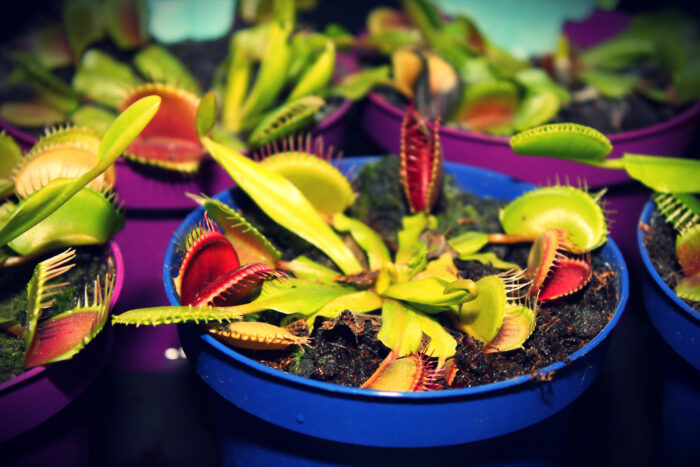
Image credits: Dmitry Makarov
Fun fact: The earliest recorded note about the plant was in 1759 when the North Carolina colonial governor, Arthur Dobbs, wrote a letter to the English botanist Peter Collinson. In 1768, John Ellis proposed the plant’s current and scientific name.
How to Care for a Venus Fly Trap?
Venus fly trap care involves some simple steps and things you should remember. Here’s everything you should know:
Soil
Venus fly trap soil should always be nutrient-poor. Vladan says, “Use pure, unenriched sphagnum peat moss mixed with perlite (mix 1 part of peat moss with 1 part of perlite). You can also use long-fibered sphagnum moss. Venus flytraps grow in acidic soil with poor nutrient content. Don’t use regular potting soil because it can slowly kill these plants due to synthetic fertilizer and mineral content.”
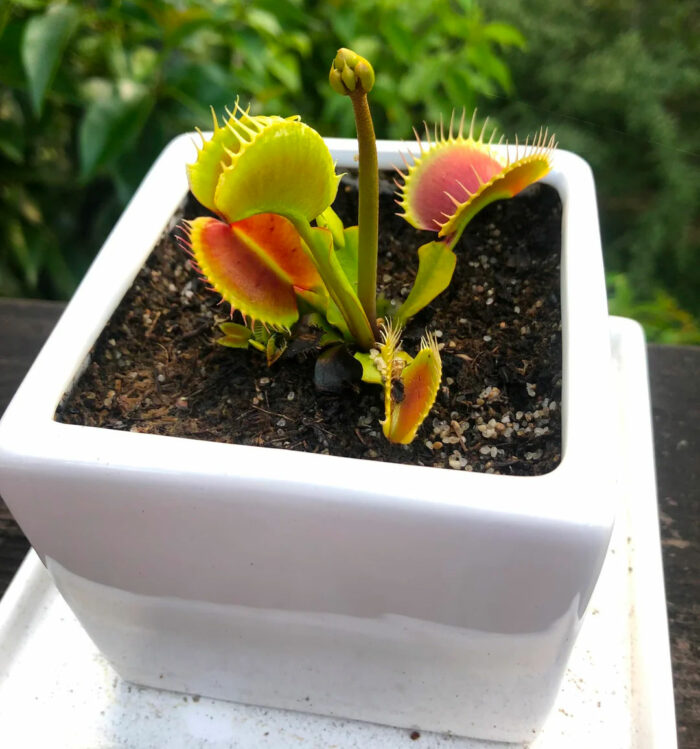
Image credits: Andy-roo77
Avoid using vermiculite because it has minerals that can slowly poison the plants. For the same reason, don’t use unglazed clay pots. Instead, use plastic pots. You can recycle old plastic bottles to create something like this beautiful ladybug flower pot.
Water
Venus fly traps need water with a TDS (Total Dissolved Solids) measurement of 50 ppm (parts per million). Some growers use a TDS meter to test their tap water to check if it can be used.
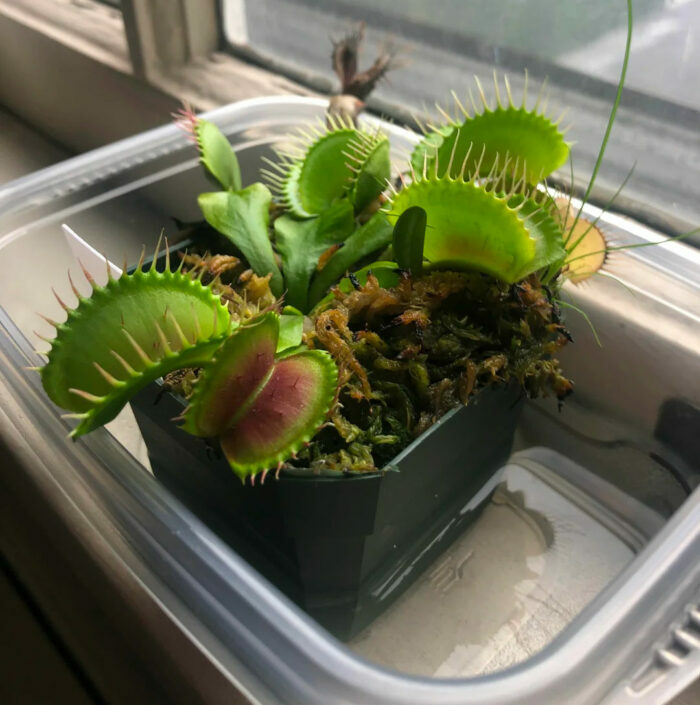
Image credits: Long_Championship_16
“It is vital to use only rainwater, distilled or demineralized water, or reverse osmosis water. You shouldn’t use tap water because it contains minerals that will slowly kill your plant. Don’t keep your plant sitting in water, as this could lead to root rot if the plant isn’t kept in optimal conditions. Instead, ensure that the soil never fully dries out. As soon as you notice the top half-inch of soil has dried out, water your plant,” says Vladan.
Light
Vladan states, “Pick a spot with partial to full sun. Venus flytraps grow in almost full sun in their natural habitat. The more light you can provide, the better your plant will grow. If possible, aim for 40,000+ lux (4,000+ FC).”
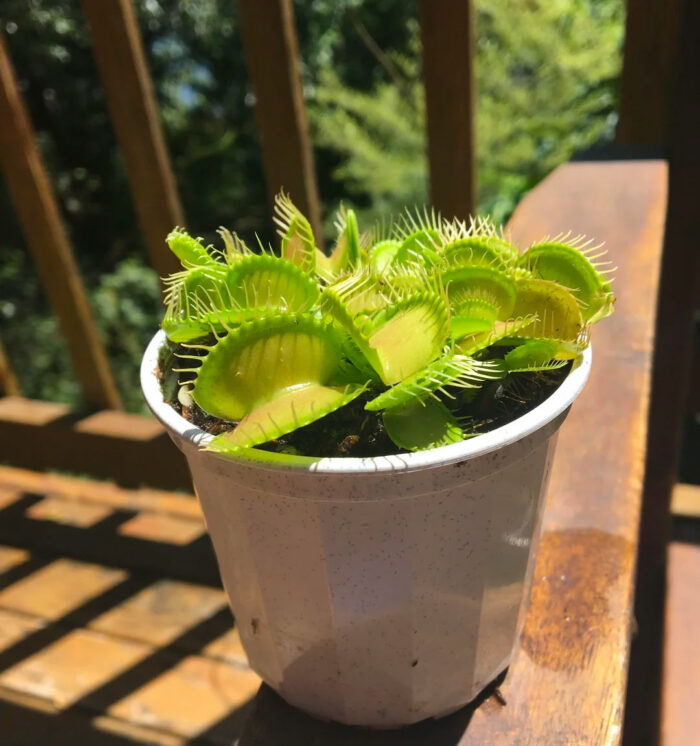
Image credits: scrlett
“Put your Venus flytrap on your window sill or in a bright spot in your sunroom. Light intensity drops exponentially with distance from windows, which means that only 1 or 2 feet away from a window can drastically reduce the amount of light your plant gets,” he says.
You might notice your Venus fly trap turning black when they are first put in the sun. This is because the plant is getting used to sun exposure. It will soon grow new traps. If the interior of the traps isn’t pink or the leaves look too long and spindly, provide more light so that it gets more energy from the sun.
Temperature and Humidity
These are warm-temperate plants. “Venus flytraps thrive in temperatures ranging from 21°C to 30°C (70°F to 86°F),” says Vladan. They need a warm and humid environment with enough air circulation.
Flowers
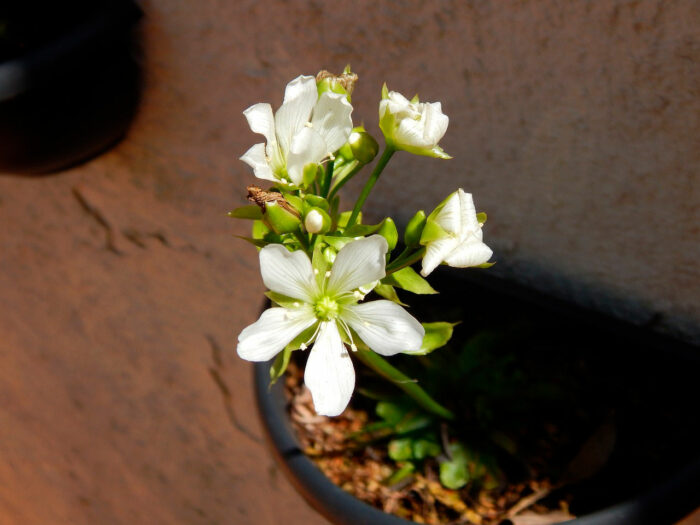
Image credits: natiibio
The fly trap produces beautiful white flowers around the 2-year mark. These flowers have green veins running from the petal’s base to the edge. The flowers grow on top of a 6-inch long stalk so they don’t touch the hair-like triggers of the traps. Pollinated flowers can produce seeds that you can harvest and plant.
Fertilizing
“Venus flytraps grow in nutrient-poor environments and get most of their nutrients from the insects they capture. This means that it is not necessary to fertilize Venus flytraps. In fact, fertilizing the plant can be harmful since the extra nutrients can burn its roots and even ultimately kill the plant. Therefore, it is generally not recommended to fertilize Venus flytraps,” says Vladan.
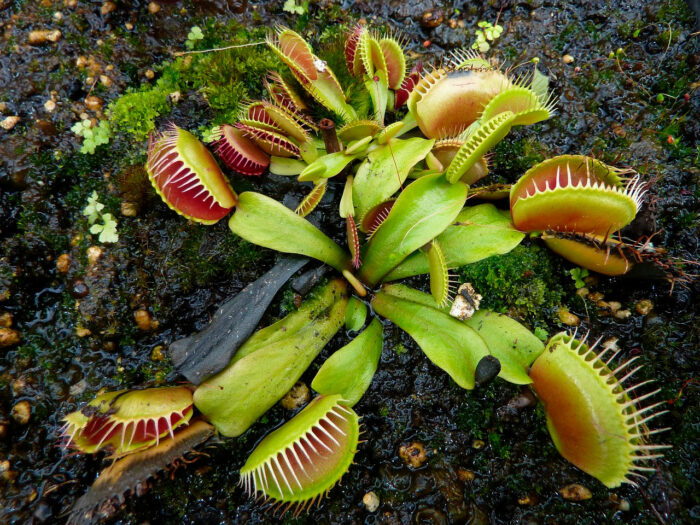
Image credits:LynnB
“It seems counterintuitive not to fertilize your plant, but it’s important to avoid overfeeding your Venus flytrap since this can cause serious damage. Once you manage to understand the conditions in their natural habitat and replicate them, caring for Venus flytraps won’t be so tricky,” he also says.
The main thing you can avoid is adding lime to the soil. You can repot your Venus fly trap to replenish the plant’s nutrients.
How to Pot and Repot the Venus Fly Trap
Vladan says, “You should repot your Venus flytrap annually to get rid of old, compacted soil. Compacted soil reduces the amount of oxygen available to the roots. Less oxygen increases the chances of root rot.”
It is also a good idea to repot the carnivorous plant when you buy it to remove any impurities from the soil. It will also help ensure that you have the correct potting medium.
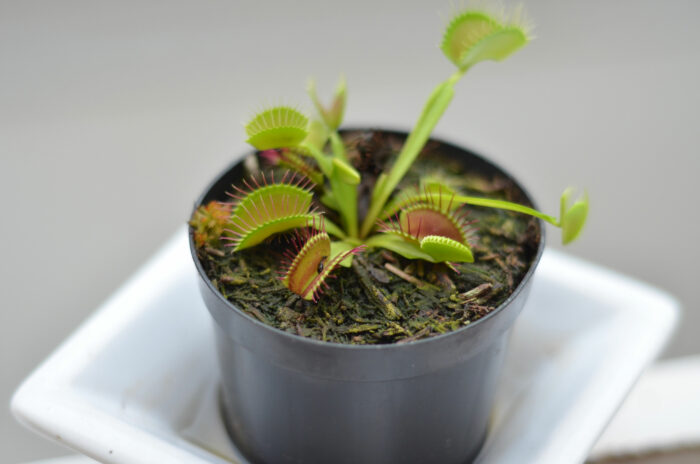
Image credit: Gabriel
“Start repotting by completely removing the old soil. Inspect the plant’s rhizomes, if you notice any brown or mushy parts, cut them off. The roots growing from the rhizomes should be black—DO NOT cut them off! Once you’ve made sure the rhizomes are healthy, pot the plant into a fresh potting mix. As mentioned before, use pure, unenriched sphagnum peat moss mixed with 50% perlite or long-fibered sphagnum moss,” he also says.
You can repot the plants any time of the year, but it is best to do it during spring or early summer when they are out of winter dormancy. Avoid repotting when the Venus fly trap is actively flowering.
How to Grow and Plant a Venus Fly Trap
These fascinating and strange plants would be a great indoor or outdoor garden addition. Here are some ways to grow and plant this endangered species.
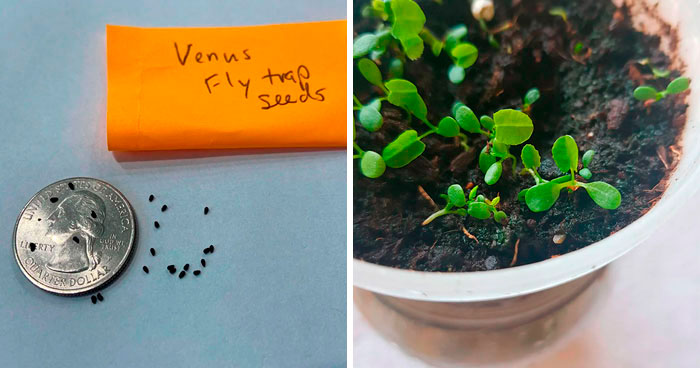
Image credits: rude_prune, GreenRabbit155
How to Plant a Venus Flytrap With Seeds
- Fill a pot with soil that is a mix of 50% peat moss and 50% perlite.
- Make sure the soil is moist, then sprinkle the seeds evenly.
- Keep the pot in standing water that is up to the halfway line of the pot.
- Make sure that the plant doesn’t get mold or fungus. You can spray the seeds with neem oil to prevent this from happening.
- The seeds will germinate within 4–8 weeks.
- Once they start germinating, place them on a brightly lit windowsill or grow them under plant lamps.
Growing Venus flytraps from seeds takes a lot of patience, but it is well worth the wait. You can harvest its seeds from August to September when the seedpods are ripe. You can also get seeds from nurseries or marketplaces.
Venus Fly Trap Care Indoors
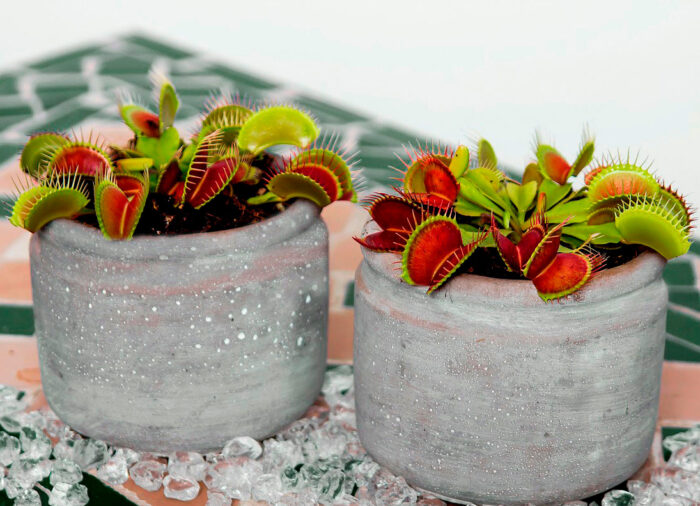
Image credits: RainerBerns
- Place the plant in a small pot at least 4 inches deep and 5 inches wide to encourage root growth.
- The pot should have a drainage hole and a tray below.
- Fill the flower pot with nutrient-low soil.
- Keep the plant on a sunny windowsill where it can get direct sunlight.
“Caring for a Venus flytrap is not so difficult once you become aware of its natural habitat. Venus flytraps love full sun, and it’s important to give them enough light. If you can’t provide them with enough natural light, you can use a grow light,” says Vladan.
Venus Fly Trap Terrarium Tips
Venus flytraps require a temperate climate to grow. You can create similar growing conditions with the help of a terrarium, a sealable glass container that can be used to grow plants. However, you have to keep a couple of things in mind when using a terrarium:
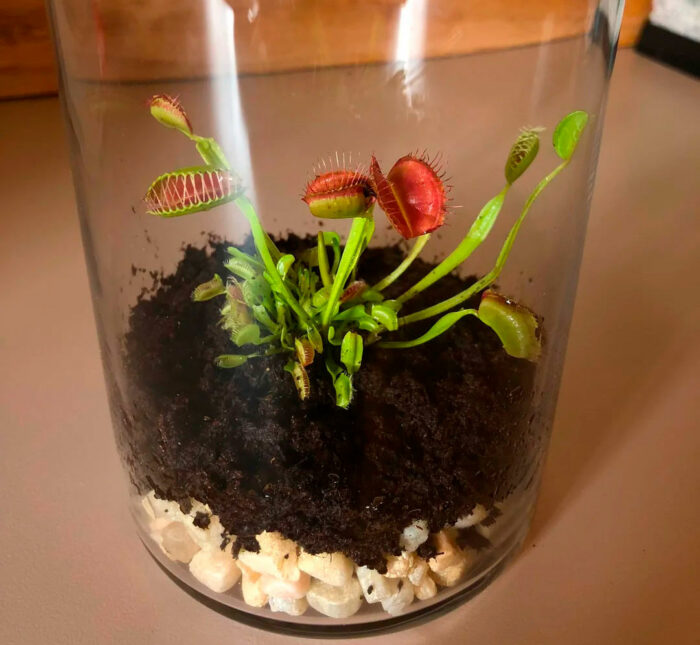
Image credits: nomestephanie
- The soil in these containers compacts over time and can develop nutrient deposits. Since the Venus flytrap’s roots aren’t designed to absorb nutrients, this can affect the plant.
- Avoid direct sunlight in a terrarium, as the magnified heat can burn the plants. Use an artificial light instead.
- Respect the plant’s winter dormancy.
An excellent alternative to a terrarium would be to place the plant in an open glass container. These California carnivores can also be grown excellently in a greenhouse or conservatory. If you’re still eager to use this container, get creative with a surreal terrarium.
What is the Main Growing Season of This Carnivorous Plant?
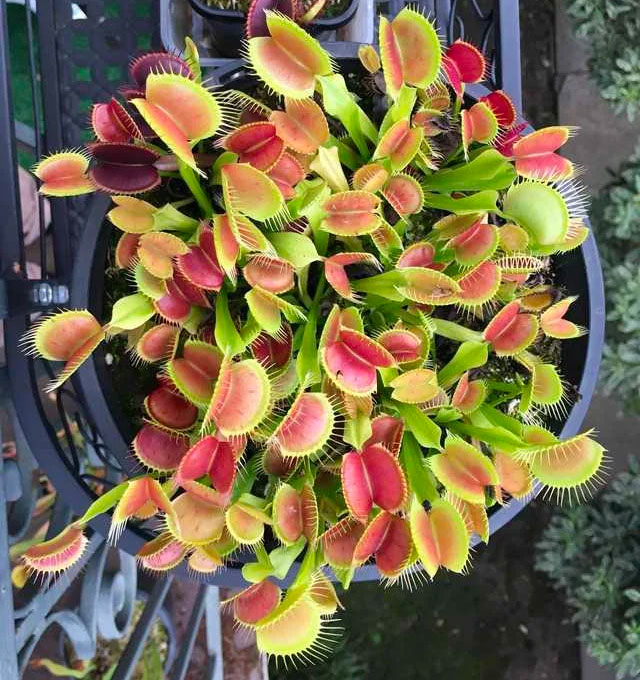 Image credits: bigbowlowrong
Image credits: bigbowlowrong The fly traps grow actively during summertime, which starts around February. The plants grow rapidly around early to mid-May. They die back to a dormant rhizome during the winter months around October.
How to Propagate the Dionaea Muscipula
Vladan says, “Venus Flytraps can be propagated using the following methods:
- Dividing plants
- Leaf cuttings
- Seeds
If you want to divide plants, separate offshoots of the plant so you can pot them separately. Remove all soil, locate the spot where two rhizomes connect, and pull them apart gently. For best success, you should try this method in the early spring to early summer months,” he says. Ensure that the plants still have a good clump of roots attached.
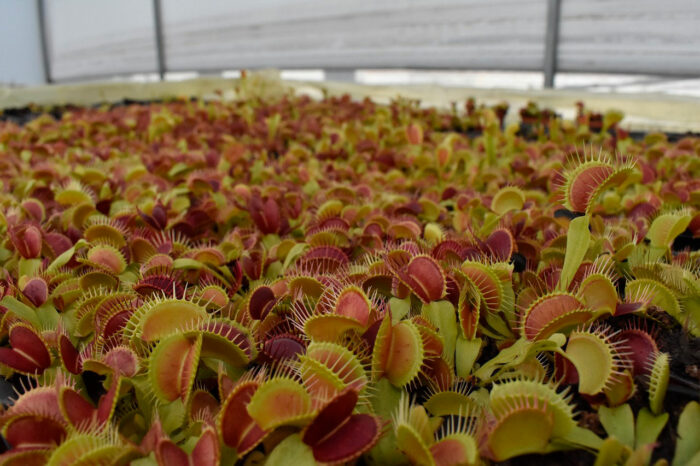
Image credits: MarcosJH
“To propagate your Venus flytrap via leaf cuttings, pull off a couple of leaves as low as possible (the leaves must have a white end—a piece of rhizome attached) and pot them in sphagnum moss or pure, unenriched peat moss mixed with 50% of perlite and cover to promote high humidity,” he also says. The best time to propagate from leaf cuttings is in early summer.
How to Feed the Venus Flytrap?
Venus flytraps get some nutrients from the soil, but their diet is supplemented with insects like spiders, ants, grasshoppers, beetles, and flying insects. The Venus fly trap food isn’t like regular plant food. If they are kept outside, they will find food naturally. Keeping these plants indoors involves feeding them small bugs or flies periodically. Don’t feed them insects or creatures larger than a third of the size of the trap; otherwise, it won’t be able to close.
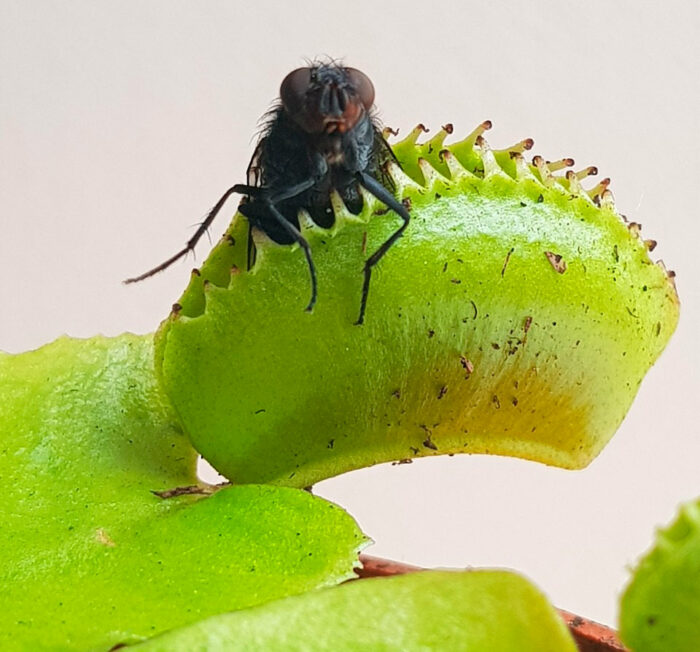
Image credits: jemmaliggett13
The traps are edged with small bristles that interlock. The trigger hairs must be stimulated; otherwise, the trap won’t close. If you are using dead prey, place the bug in the trap. Use a small paintbrush to touch it until you get the lobes to snap shut. After it is closed, stimulate the triggers again to ensure the plant digests its food.
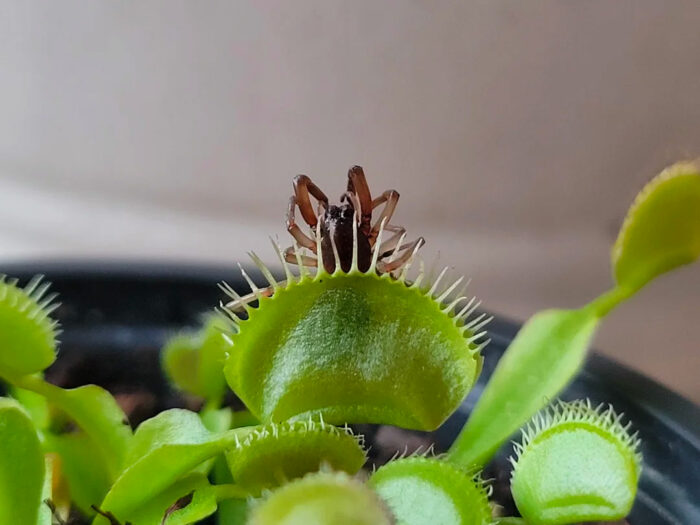
Image credits: Shake-Me-Down
“You should handle the plant carefully and avoid unnecessary touching of the traps and leaves. Especially if the plant has only a few traps and doesn’t look healthy, touching the traps will waste its energy. You can touch a Venus Flytrap if it’s healthy and has a lot of traps,” says Vladan.
Digesting an organism takes a Venus fly trap 3–5 days. Avoid feeding it large meat like chicken, steak, or hot dogs. Don’t give it human food like candy or chocolates.
Pro Tip: Feeding one trap per week will provide enough nutrients to the plant.
Winter Dormancy
The plant’s winter dormancy usually lasts between November to February. Vladan states, “Many beginners don’t know that Venus flytraps go into hibernation. They need a winter dormancy period with a temperature ranging from 0°C and 12°C (32°F to 53°F).”
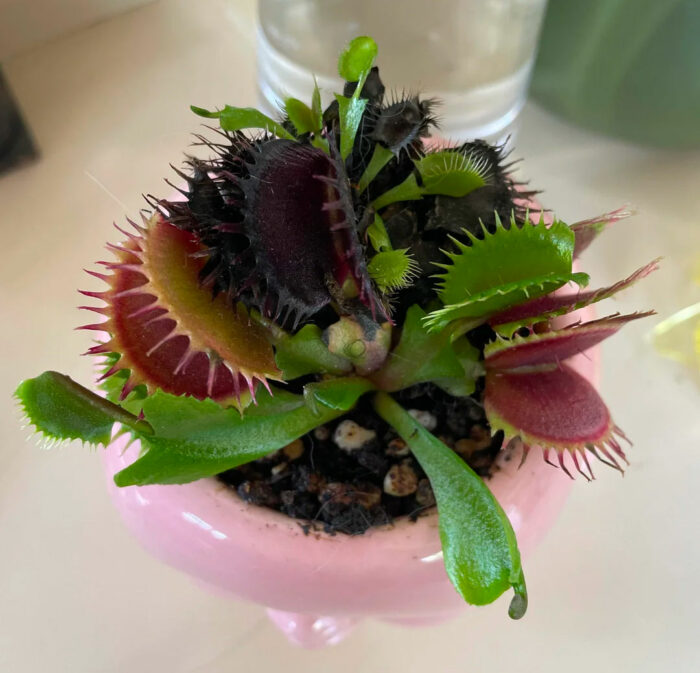
Image credits: reddit.com
“A screened-in porch or garage with a sunny window that stays in that temperature range works great for hibernation. You should use less water and reduce the watering frequency during hibernation. The plant won’t photosynthesize as much in lower temperatures, so it will absorb less water. However, don’t let the soil dry out fully,” he says.
If you are using a terrarium, don’t let it freeze. This can endanger the plants and cause the glass to break. Some beginner growers also believe that their plants should avoid hibernation. As much fun as it would be to dress up the Venus fly trap as Santa and let it enjoy the winter, it can die if it misses the hibernation period.
What Are the Common Pests and Problems of the Venus Flytrap?
There isn’t much that the Venus flytraps are threatened by. You need to steer clear of just a few common pests.
Aphids
Aphids are sap-sucking insects that can damage the entire plant. You can remove them slowly with tweezers. Another way is to submerge the plant in distilled water for two days. If the infestation doesn’t clear, try again. In cases of severe infestations, apply an insecticidal soap or neem oil.
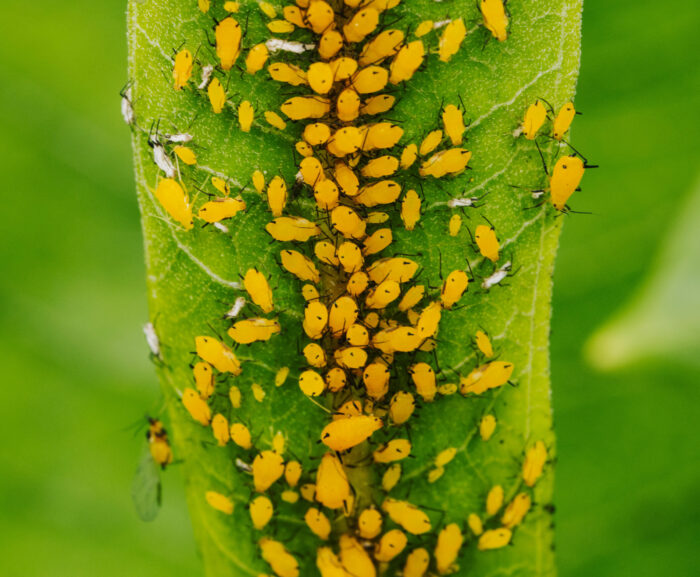
Image credits: Kelly
Fungus Gnats
These are fruit-fly-sized insects that often harm indoor plants. In this case, the larvae are the main problem because they dig into the plant stems and eat leaves. You can control them by drenching the soil with Bacillus thuringiensis (BT), a biological pesticide. Prevent them from coming again by keeping the soil slightly moist, not soggy.
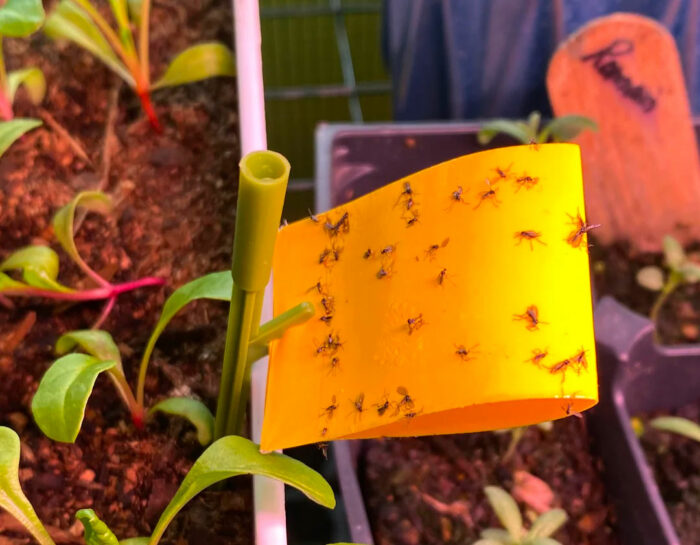
Image credits: dangermouse-z164
What Are Some Cultivars of Venus Flytraps?
There is only one species of Venus flytrap with a couple of unusual varieties of cultivars. They have been bred horticulturally, and the popular types are:
Red Dragon
Image credits: lindi_v6
This Venus flytrap is also called Dionaea Muscipula ‘Akai Ryu.’ Its leaves turn dark red in full sunlight, and it drops all its leaves during the winter dormancy. It can grow up to 4 inches tall and should be kept indoors in cold climates.
King Henry
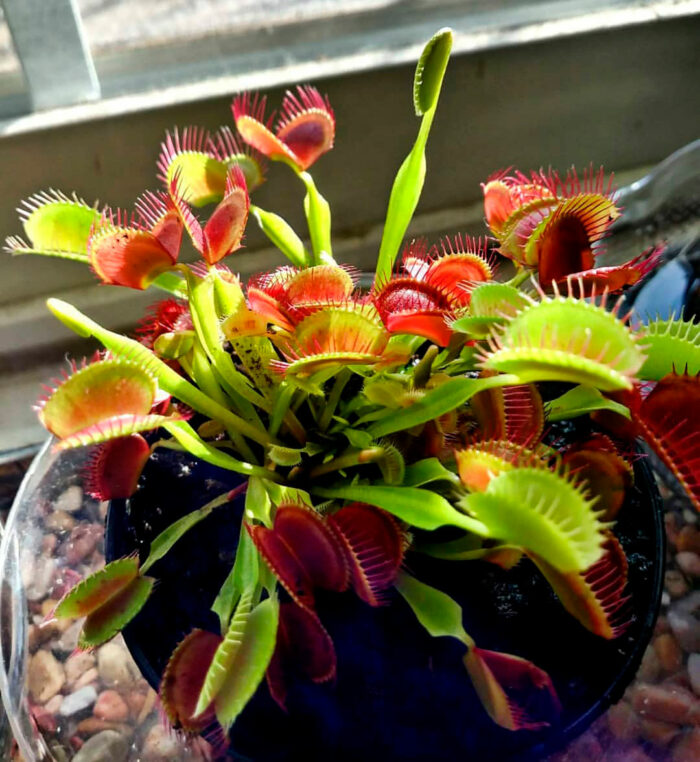
Image credits: sammitychan
This Venus flytrap is also called Dionaea Muscipula ‘King Henry.’ It grows up to 5 inches tall and has large traps. It is a giant Venus fly trap that got its name from the loud-mouthed King Henry from the show The Tudors. It is one of the biggest Venus fly trap cultivars.
Gremlin
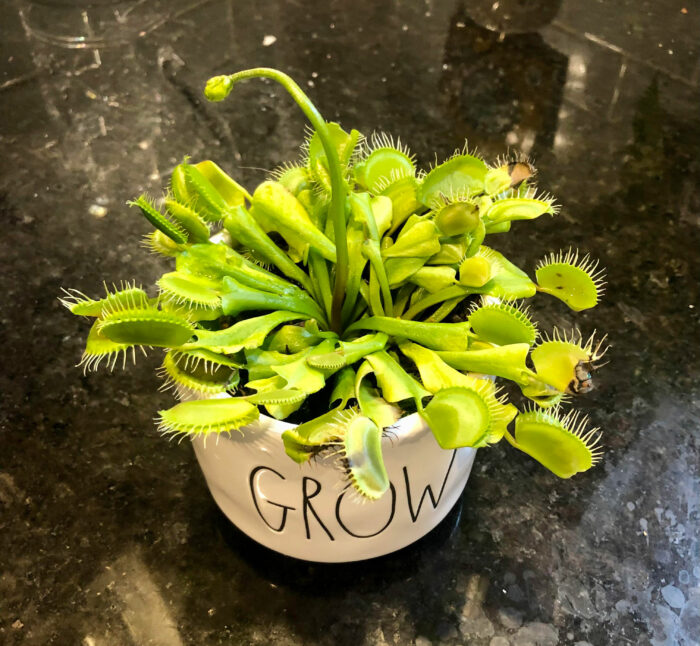
Image credits: xraystation
This Venus flytrap is also called Dionaea Muscipula ‘Gremlin.’ It is an all-green fly trap that comes with large clumps of traps. Each one can grow up to an inch long over time.
How Can You Buy a Venus Fly Trap?
Venus flytraps are readily available through online garden centers. You should also check local nurseries or large retailers like Home Deport or Walmart. Check for signs of pests or damage before buying them. Most of the Venus flytraps should cost between $4–7.
Did You Fall Into the Venus Fly Trap?
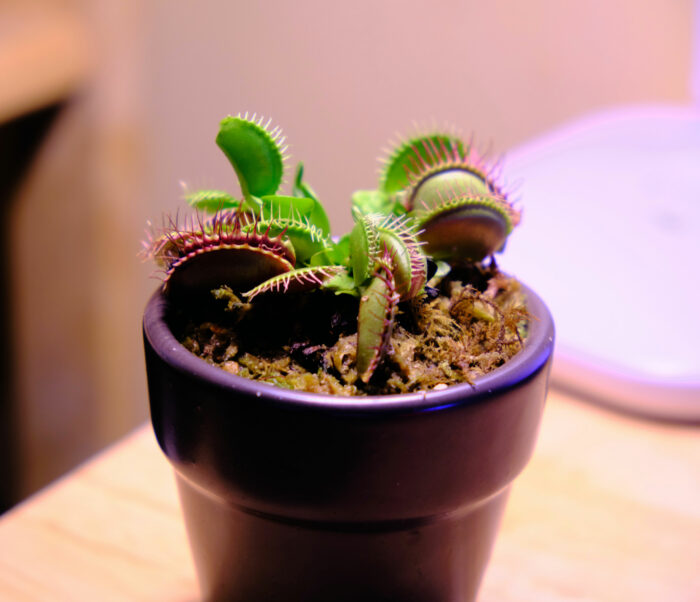
Image credits: Phạm Mạnh
After reading all this, we’re sure this unique plant has won you over. Its incredible qualities and special features make it one of the most wonderful plants in the world. You might become a carnivorous plant connoisseur once you get the hang of its quirks! Check out these interesting macro photos of the alien-like carnivorous Drosera plant for more options.
Venus Flytrap FAQs
Why Are Venus Flytraps Illegal?
It isn’t illegal to keep a Venus flytrap, but poaching wild plants is punishable by law. This is because the declining population of the Venus flytrap led it to become an endangered species.
How Long Does It Take for a Venus Flytrap to Eat a Fly?
The fly trap takes 3–5 days to complete digestion but can take longer. Once the digestion is complete, the trap will slowly open again.
How Many Times Can a Venus Flytrap Close Before It Dies?
The Venus flytrap might close 6–10 times before dying. Be careful not to keep triggering the lobes all the time to prevent the plant from wasting energy.
How Do You Trigger a Venus Flytrap?
Brush the trigger-like hairs to close on prey. Ensure the plant seals shut by brushing the hairs again. Two touches within 30 seconds are enough to trigger the trap.
Does Venus Fly Trap Eat Gnats?
Yes, Venus fly traps eat gnats along with flying insects, beetles, spiders, and ants. Don’t feed it anything larger than 1/3rd of its size.
:') death by chocolate takes on a new meaning
Load More Replies...:') death by chocolate takes on a new meaning
Load More Replies...
 Dark Mode
Dark Mode 

 No fees, cancel anytime
No fees, cancel anytime 






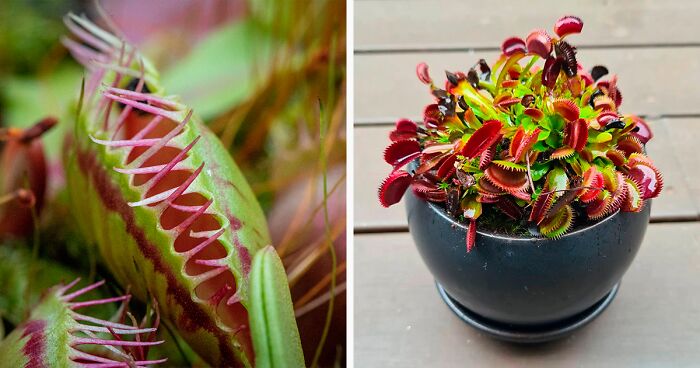
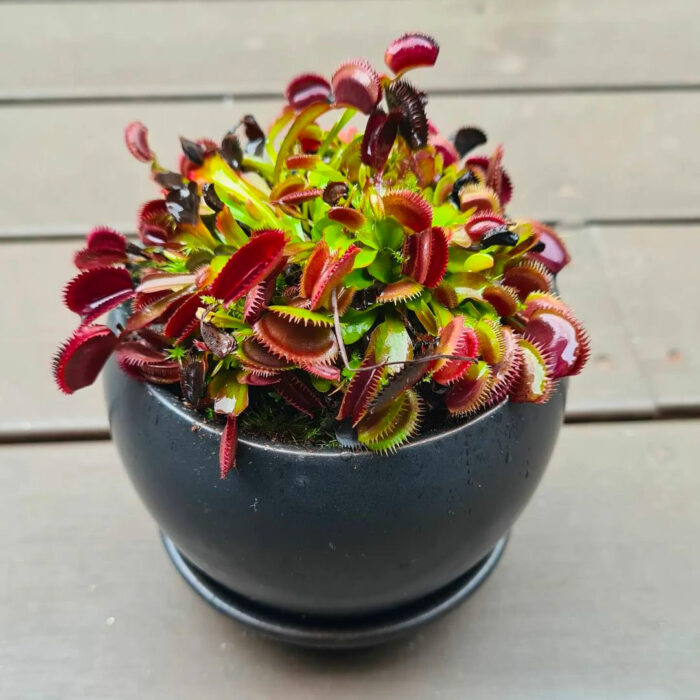













































16
2